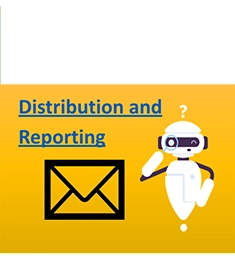BMS
rtificial intelligence (AI) and machine learning (ML) are set to revolutionize pharmacovigilance (PV), the science of identifying, evaluating, and preventing adverse drug reactions (ADRs). The landscape of drug safety is rapidly evolving, demanding innovative approaches to PV. Traditional PV systems struggle to keep the pace with increasing volume and complexity of clinical trial and healthcare data. There are many promising use cases of AI/ML enhancing the efficiency, accuracy, and timeliness of drug safety monitoring. However, the implementation of AI/ML presents several significant challenges. These include ensuring data privacy and security, mitigating model bias, establishing robust model validation processes, navigating complex ethical implications, and developing clear, globally harmonized regulatory standards.
Regulatory Framework
The PV landscape is undergoing a significant evolution, with a strong trend toward transitioning from paper-based processes to sophisticated digital systems. Regulatory agencies such as the Food and Drug Administration (FDA) and European Medicines Agency (EMA) recognize this transformative potential and are actively exploring AI/ML. As shown in Figure 1, the FDA’s Adverse Events Reporting System (FAERS) has received over 2 million Individual Case Safety Reports (ICSRs) annually since 2020. This sheer volume of ICSRs has further amplified the need for new technologies for both industry and regulators. Regulatory agencies, including the FDA, have issued draft guidance documents to shape the regulatory framework for AI in clinical research. The FDA’s discussion papers and AI/ML draft guidance, when finalized, will reflect the agency’s current thinking on AI/ML in drug development. The EMA published its guiding principles and reflection paper on AI in the medicinal product lifecycle. The Council for International Organizations of Medical Sciences (CIOMS) Working Group XIV is focusing on establishing and promoting AI in the field of PV. CDER’s Emerging Drug Safety Technology Meeting Program further demonstrates the FDA’s commitment to implementing AI/ML.
Artificial Intelligence and Machine Learning in Individual Case Safety Reports Processing
In signal detection, ICSRs have a long-proven track record of identifying safety issues. The escalating volume and complexity of data sources, encompassing clinical investigations, post-marketing experience, literature, and social media, mandate more efficient management. Several use cases of AI/ML offer significant enhancements to multiple facets of ICSR processing (Figure 2).
Determination of drug causality could be enhanced by AI/ML by analyzing case narratives and related data. These tools could then suggest targeted follow-up questions for healthcare providers and reduce redundant inquiries.
Finally, for case distribution, AI could automate reportability decisions and determine ICSR due dates based on regulatory intelligence.
Enhancing Signal Detection and Risk Management in Pharmacovigilance
Signal detection is a fundamental aspect of pharmacovigilance, essential for identifying ADRs and ensuring patient safety. Traditional methods often face challenges due to siloed data and limited analytical capabilities.
Artificial intelligence could integrate disparate data sources, including electronic health records (EHRs), clinical trial databases, and real-world evidence platforms, creating a comprehensive view of drug safety. This integration addresses the limitations of fragmented data sets and enables more informed decision-making. Critical safety information that was previously underutilized could be unlocked by NLP algorithms, which extract insights from unstructured data, such as medical narratives and scientific literature.
Advanced AI algorithms play a pivotal role in analyzing complex data sets to identify subtle correlations that conventional methods might miss. Specificity is enhanced by AI, reducing false positives through noise filtering and deduplication while improving sensitivity by detecting faint patterns in massive data sets. These advancements enable earlier detection of true safety signals, allowing timely interventions.
Proactive risk management in PV is also augmented through AI-driven predictive models, which assess individual patient risks for ADRs based on demographics, comorbidities, and medication history. AI supports precision medicine by leveraging biomarker data to predict treatment outcomes and identify ADRs tied to specific biomarkers. Furthermore, AI helps prioritize safety signals for investigation based on severity and clinical significance, optimizing resource allocation. These innovations elevate patient safety and modernize pharmacovigilance practices.
Challenges and Considerations
Implementing AI in PV requires addressing critical technical and logistical challenges. Data quality and availability are major hurdles, with heterogeneous sources demanding robust standardization and harmonization. Fragmented data silos impede comprehensive analysis, necessitating innovative integration solutions. Ensuring patient privacy and data security is paramount, requiring stringent deidentification and access control measures.
Models can inherit biases from training data, leading to skewed outcomes. Tackling these issues requires thoughtful data curation, equitable model design, and continuous refinement. The “black box” nature of some models presents challenges in interpretability, making explainability vital for building trust and achieving regulatory compliance. Rigorous validation and dynamic monitoring ensure that models remain reliable and robust in evolving healthcare landscapes.
Ethical concerns, such as algorithmic bias and its impact on patient care, must be carefully addressed. Challenges like integrating AI tools with existing PV systems often require significant investments in infrastructure, technology, and skilled personnel.
Conclusion
Despite the challenges, AI holds immense potential to revolutionize PV. As AI technologies evolve, innovative applications in drug safety will emerge. Regulatory agencies and industry efforts, such as those by CIOMS, are crucial for establishing principles and guidance for AI/ML. These tools should augment, not replace, the critical thinking and experience of safety professionals. A multifaceted approach—combining technical expertise, regulatory alignment, ethical frameworks, and strategic change management—is key to unlocking AI’s transformative potential in PV. To advance AI/ML in pharmacovigilance, companies must build infrastructure, validate models, foster collaboration, enhance workforce skills, and scale pilots, and regulators should provide guidelines, sandboxes, data sharing, and public-private partnerships.









